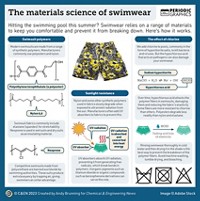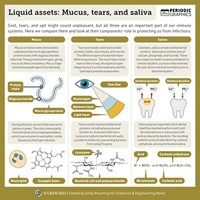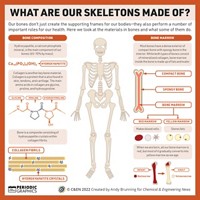Advertisement
Grab your lab coat. Let's get started
Welcome!
Welcome!
Create an account below to get 6 C&EN articles per month, receive newsletters and more - all free.
It seems this is your first time logging in online. Please enter the following information to continue.
As an ACS member you automatically get access to this site. All we need is few more details to create your reading experience.
Not you? Sign in with a different account.
Not you? Sign in with a different account.
ERROR 1
ERROR 1
ERROR 2
ERROR 2
ERROR 2
ERROR 2
ERROR 2
Password and Confirm password must match.
If you have an ACS member number, please enter it here so we can link this account to your membership. (optional)
ERROR 2
ACS values your privacy. By submitting your information, you are gaining access to C&EN and subscribing to our weekly newsletter. We use the information you provide to make your reading experience better, and we will never sell your data to third party members.
Biological Chemistry
Periodic Graphics
Periodic Graphics: The chemistry of how our skin responds to the sun
Chemical educator and Compound Interest blogger Andy Brunning illuminates the biochemistry behind sunlight’s effects on our skin.
by Andy Brunning, special to C&EN
July 18, 2021
| A version of this story appeared in
Volume 99, Issue 26


To download a pdf of this article, visit https://cenm.ag/sunskin.
References used to create this graphic:
Clancy, Suzanne. “DNA Damage & Repair: Mechanisms for Maintaining DNA Integrity.” Nat. Educ. (2008).
De Gruijl, Frank R., Henk J. van Kranen, and Leon H. F. Mullenders. “UV-Induced DNA Damage, Repair, Mutations and Oncogenic Pathways in Skin Cancer.” J. Photochem. Photobiol., B (Oct. 2001). DOI: 10.1016/S1011-1344(01)00199-3.
Hopkins, Ryan. “How Ultraviolet Light Reacts in Cells.” SciBytes (blog). Feb. 14, 2015.
Soyer, H. Peter, and Katie Lee. “Explainer: What Happens to Your Skin When You Get Sunburnt?” Conversation, March 9, 2016.
A collaboration between C&EN and Andy Brunning, author of the popular graphics blog Compound Interest
To see more of Brunning’s work, go to compoundchem.com. To see all of C&EN’s Periodic Graphics, visit http://cenm.ag/periodicgraphics.





Join the conversation
Contact the reporter
Submit a Letter to the Editor for publication
Engage with us on Twitter